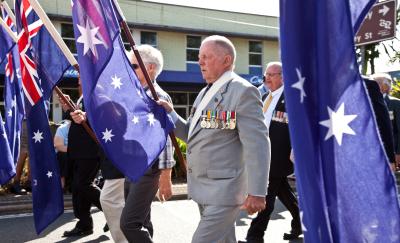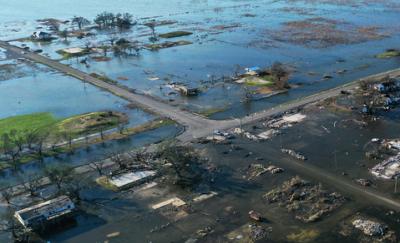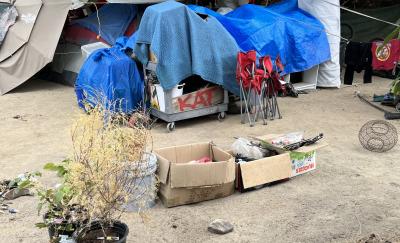Voices from Rapid Re-housing Programs



Many communities across the country use rapid re-housing (RRH) programs to help individuals and families experiencing homelessness find housing—including move-in costs and short-term rental assistance—and offer case management.
RRH has been a powerful strategy for moving individuals experiencing homelessness out of shelters for many years, playing an increasing role since the 2010s. RRH has also been an essential resource for people who lost their housing due to the COVID-19 pandemic. However, thus far, there is not a lot of information about how participants experience the RRH program. A recently completed Abt study for the Office of Policy & Research (PD&R) at the U.S. Department of Housing and Urban Development (HUD), found the following were among the issues RRH participants were navigating:
- Interdependent challenges of maintaining childcare, employment, and transportation.
- The destabilizing effects of low-wage, unpredictable employment on housing.
- RRH’s interplay with downward mobility and long-term unemployment.
- The ripple effects of an illness or injury on people’s finances and housing.
- The ability to afford housing in high-cost cities.
(See “Participant Experience Snapshots” below for more on each of these themes.)
For 15 months (from the end of 2018 until March 2020), Abt researchers stayed in close contact with 16 RRH participants via text, phone calls, and in-person meetings in their homes, at their case management appointments, over coffee, or at local libraries. Some of these were informal check-ins while others were formal interviews; together, these interactions allowed us to better understand participants’ experiences while in RRH and after leaving their programs. This small-scale, in-depth approach helped the Abt team get nuanced insight into RRH participants’ experiences both during and after their program participation.
We found that all RRH participants were able to move from emergency shelter into a new housing unit. About half of the units were in the private market, meaning the participants would take over the rent at market rate after the RRH program ended. The rest entered subsidized housing, where they would pay below-market rate rent after their time in RRH ends. Almost half the people in our study shared their new housing with roommates to make it more affordable.
Case management is a core component of RRH program design, and is essential to assess clients’ needs and provide tailored financial and supportive services. For many participants in our study, their relationship with their case manager was the most stable and reliable relationship in their life. Case managers got to know them personally, helped them set their priorities, and connected them with other available services. “Jermaine” (all names are pseudonyms) described his case manager’s support:
Tammy stayed on me as if I were her child… I’m not saying she treated me like a child, I’m saying I received that love as if I was her own child … I want to show Tammy, ‘I’m still living here [after two years]; thank you for everything you did.’
RRH provided study participants with a temporary window of housing stability but, by the end of the study, half of study participants were precariously housed—doubled up with friends, homeless, or behind on rent and facing eviction. This reflects that many of the challenges our RRH study participants faced were symptoms of poverty and structural barriers that a time and resource-limited program like RRH cannot solve alone. These include a lack of employment that provides a living wage with sufficient and reliable hours; insufficient mainstream benefits (childcare, SNAP, income support, options for single adults); a lack of accessible, affordable, or free health care options to address deep-seated and significant issues of mental health, substance use disorder, and physical health; insufficient transportation infrastructure (or its high cost vis-à-vis incomes); and accumulated debts and reduced credit from the instability that preceded their homelessness.
While RRH cannot solve the underlying challenges of living in poverty, we suggested several approaches that, if implemented, could help participants maintain their housing stability after RRH assistance ends. These changes would especially help people in RRH with higher needs who may otherwise struggle to stabilize in housing:
- Clearly communicate the level and duration of support offered early in the program, including for rental assistance and case management.
- Include case management coaching that helps participants prepare for fluctuations in RRH assistance or in their income.
- Provide stronger linkages to mainstream benefits and other local support programs, including mental and physical health services and childcare subsidies.
- Offer larger amounts of rental assistance with a longer duration in recognition of the longer period it takes some households to achieve sufficient income to cover their rent.
RRH Participant Experience Snapshots
Conflicts between childcare, employment, and transportation
“Bethany,” a mother of five young children, had experienced multiple spells of homelessness in a mid-sized Southern city since the birth of her first child eight years prior. During her time in RRH, she gave birth to two more children and struggled to balance her childcare needs with employment and unreliable transportation. She completed a hospitality training offered in partnership with a local high-end hotel while she was in the third trimester of one of her pregnancies and was offered a full-time job. She planned to accept the position as soon as possible after giving birth. However, her car had mechanical problems and expired tags she could not afford to reinstate. She tried to commute by bus, but the two-plus hour commute was not feasible with small children at home. Instead, she accepted a part-time position in a retail store that was easier to reach by bus. When her manager wanted to promote her to full-time assistant manager at another location farther away, Bethany wished she could accept it but ultimately turned it down to keep working closer to home and accessible by public transportation.
Low-wage, unpredictable employment, and its effects on housing


In a high-cost Northeastern city, “Tania,” a 48-year-old single woman, worked as a school bus monitor whose income fluctuated throughout the year. At peak hours when school was in session, Tania earned enough to cover $800 in rent, along with food, travel, and her phone bill. Despite her planning and strict budgeting, she often fell behind on bills and relied on her federal tax refund to cover the gap and repay debts. When school was out of session, she could only afford $600 a month in rent. Despite her reservations about paying a higher rent, she ultimately moved into a room in a shared apartment costing $800 a month. For the first six months in her RRH unit, Tania relied on savings she had amassed while staying in the shelter. As Tania fell behind on rent after having exited the RRH program, she tried to get assistance from another city program that helps residents at risk of eviction. The application process proved challenging, and Tania resorted to taking out a payday loan of $2,000 to cover rent and living expenses. She was experiencing hunger and not wanting to resort to illegal activities to make rent. Then the school system she worked for shut down due to the COVID-19 pandemic. Tania’s experience illustrates the ongoing challenges faced by working poor households who participate in RRH programs.
Downward mobility and long-term unemployment
“Jude” was laid off from his job in early 2016. A college graduate, he struggled to find employment and could no longer afford the rent for his shared apartment in a high-cost Northeastern city. While staying in an emergency shelter and working with a local job training program, Jude was accepted by a RRH program. Once he found a job, his case manager helped him search for housing and he moved into a studio apartment. During his time in RRH, Jude continued to work and received assistance with managing his budget. Two years later, Jude had been laid off from his job at the beginning of the COVID-19 shutdowns. He was planning to live off the savings he had accumulated while in the RRH program as he looked for another job.
Ripple effects of an illness or injury on people’s finances and housing


“Luke,” his partner “Jay,” and their children became homeless for the first time after Luke had one of his lower legs amputated to treat severe blood clots that were brought on by his career installing telecommunications equipment. The family fell behind on their rent in a mid-sized Southern city and was evicted before Luke applied for Social Security Disability Income (SSDI). Prior to eviction, Luke’s family lived in an apartment in a suburb known for being family-friendly and having good schools. After eviction, they spent 12 weeks in a church-based shelter program in which a cohort of families moved to a different church each week and were transported each morning to a day center. Although a case manager in that program helped Luke apply for SSDI and a RRH program, he attributed the stress of that living situation as being partially responsible for the heart attack he had during that time.
Luke and Jay were accepted into a RRH program while in the church-based shelter program and moved into a single-family home recently renovated and owned by the RRH program’s parent agency. By the end of the study, Luke and his children were receiving Social Security income and Jay, who had been a stay-at-home parent before Luke’s amputation, had begun working part-time.
Affording housing in high-cost cities
“Ricardo” moved from Puerto Rico to a high-cost Northeastern city, where he had difficulty finding work and ended up staying in a shelter. He was accepted into short-term RRH and moved into permanent supportive housing he shared with a roommate in a prosperous suburb. He liked the quiet neighborhood and its proximity to a grocery store, but did not like the high prices charged by the local businesses. “Me and my girlfriend went to buy eggrolls in a chain store next to my building … and it was almost $13 for two eggrolls … it’s crazy,” he said. “It’s too much.” Ricardo was working hard to find odd-jobs and part-time employment but struggled with depression as a result of being unable to support himself. Ricardo found a job and was about to start work as the COVID-19 restrictions began, but ultimately did not get hired.
These vignettes provide missing perspectives on what happens between public policy and people’s every day lives. As social policy program researchers, we are grateful for the insights the RRH participants shared, and are hopeful they help inform new approaches for housing programs in the United States.
Interested in learning more about Rapid Re-housing? Read our full report here.
Read More
Perspectives' Blogs on Housing, Communities & Asset Building

Australian Veterans’ Care Program Evaluation
An evaluation of the Coordinated Veterans’ Care Program confirmed the program’s positive impact on participants' health and satisfaction.

Shelter from the Storm: Addressing the Dual Crisis of Extreme Weather and Homelessness
Homeless response systems need support to strengthen their resilience to extreme weather shocks and the disproportionate harm that extreme weather has on people experiencing homelessness.

Understanding Homeless Encampments in Long Beach, L.A. River Basin, and San Fernando Valley
A Conrad N. Hilton Foundation-funded, Abt-led evaluation studied three encampments in Los Angeles.

Rental Housing Results from Low-Income Housing Tax Credits
Abt is merging databases with information on rental housing results from low-income housing tax credits to inform decision-making.